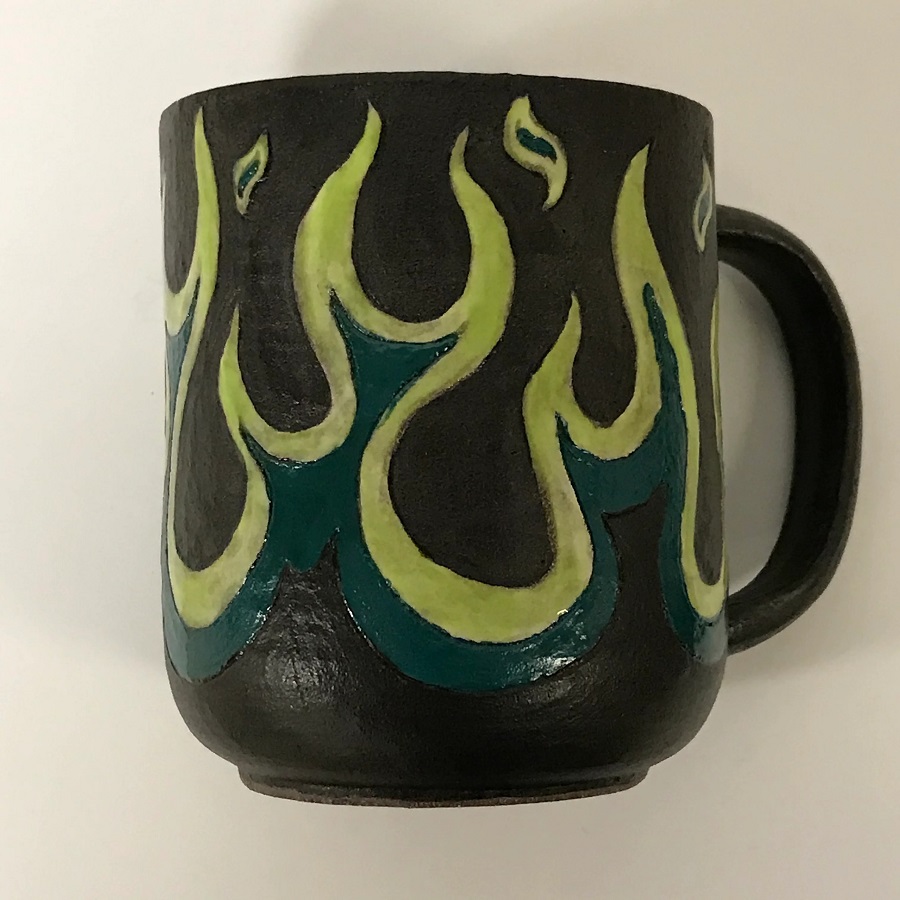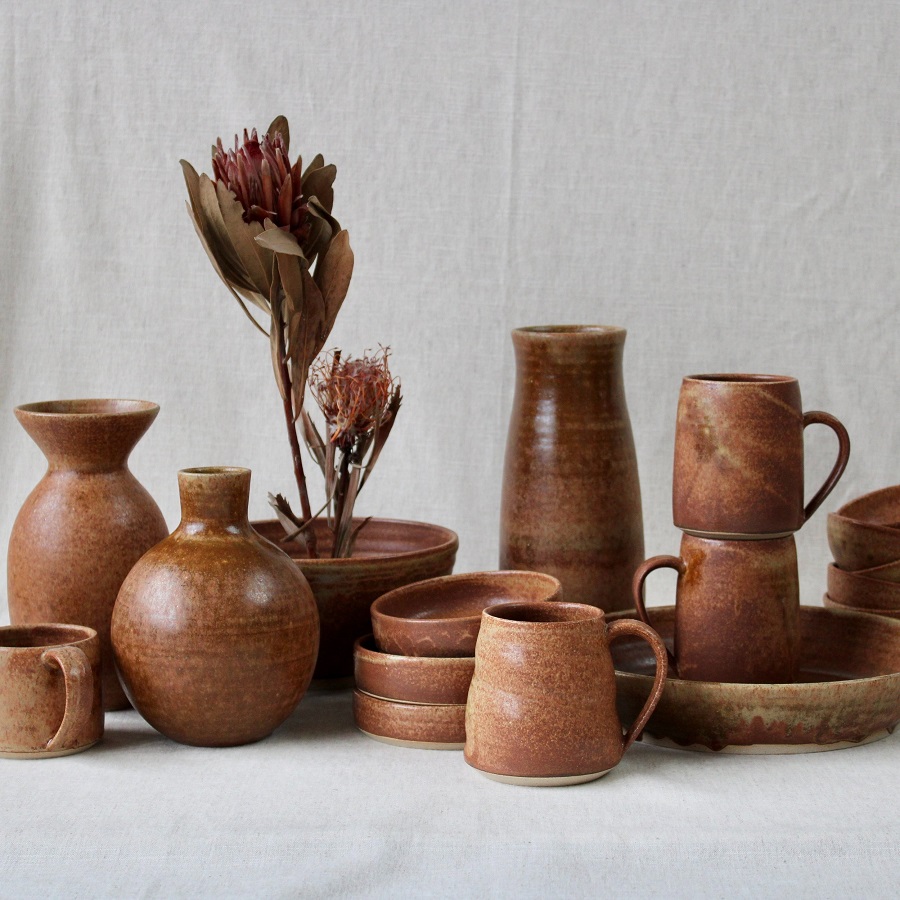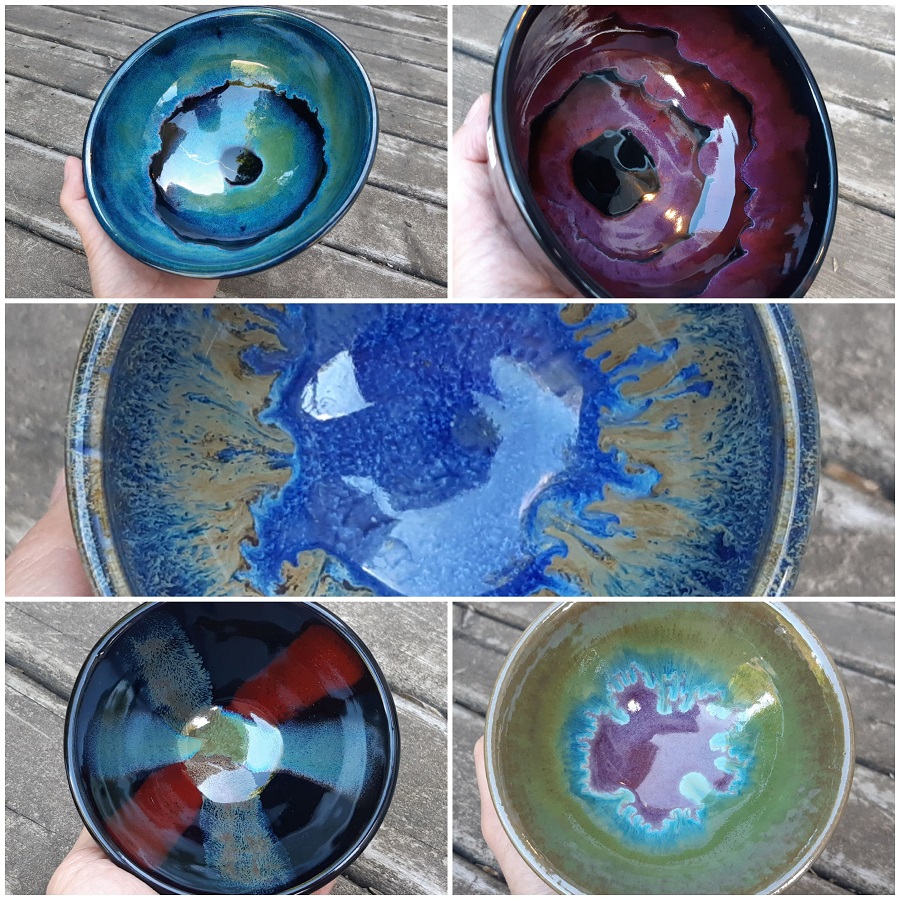The Basics of Ceramic Glazes
Understanding what is glaze in ceramics is fundamental to mastering the craft. A ceramic glaze is a glassy coating applied to pottery. Its purpose is twofold. It waterproofs the item and adds a decorative finish. The glaze fuses to the pottery when exposed to high temperatures.
Glazes come in many forms and finishes. They can range from glossy to matte. Some even mimic metal surfaces. The right glaze choice can transform a simple clay object into a work of art.
The glazing process is quite intricate. It involves applying a glaze mixture to the surface of bisque-fired ceramics. To begin with, the ceramist must ensure the piece is clean. Any dust or grease can affect how the glaze adheres to the object.
After application, the ceramist fires the piece in a kiln at a high temperature. This heat work melts the glaze onto the clay body. The result is the smooth and often colorful surface we associate with glazed ceramics.
Whether a hobbyist or a professional, knowing the basics of how glazes work is essential. It’s the foundation for successful ceramic projects. A well-applied glaze enhances durability and appearance, making it a crucial step in the process.

Different Types of Ceramic Glazes
There are numerous types of ceramic glazes each with unique properties and effects. Understanding different glazes can help you make informed decisions for your ceramic projects. Below are some common types of glazes you might encounter.
Glossy Glazes
Glossy glazes offer a shiny, reflective finish. They bring out vibrant colors and can make details pop. These glazes are ideal for decorative pieces and work well with underglaze decorations.
Matte Glazes
Matte glazes provide a non-reflective, satin-like surface. They are perfect for a subtle and sophisticated look. This type of glaze can add depth to your pottery without overshadowing the form.
Satin Glazes
Satin glazes are between glossy and matte. They give a soft sheen that’s not too shiny. They’re great for pieces that you want to have a gentle glow.
Transparent Glazes
Transparent glazes don’t conceal the clay body. They offer a clear coating, allowing for the natural color of the clay to show through. They enhance the clay’s texture and are excellent for showcasing the material itself.
Opaque Glazes
Opposite to transparent, opaque glazes cover the clay’s surface. They hide any marks and can provide a solid color. Opaque glazes are often used to create a uniform, consistent look on pieces.
Specialty Glazes
Specialty glazes, like crystalline or raku, create unique effects. They can mimic textures, like frost or metal finishes. Exploring specialty glazes can lead to stunning outcomes but may require special firing techniques.
Choosing the right type of glaze depends on the desired outcome of your ceramic piece. Experiment with different glazes to discover the best one for your work. Always consider the effects you want to achieve and how it complements your design. With the right selection, glazing can turn a plain ceramic into an exquisite piece.

The Chemistry Behind Glazing in Ceramics
Going beyond the surface, understanding the chemistry of glazes is key. At its core, the chemistry behind ceramic glazing is what makes it such an exciting area to explore. It involves a transformation from a powdery blend to a glassy coat. Let’s delve into this alchemy.
What Happens During the Glaze Firing Process
During firing, a glaze undergoes several changes. It begins with a ‘water smoking’ stage, where moisture evaporates. Next comes the ‘bisque’ stage where chemical water leaves the clay body itself. Then, as the temperature rises, the actual glazing starts.
First, the glaze materials melt. This stage creates a liquid glass that starts to stick to the ceramic surface. As the kiln’s heat increases, this liquid spreads across and bonds more firmly. This process is called ‘sintering’.
After reaching the peak temperature, the kiln cools down. The once-liquid glaze now solidifies into a glassy layer, latching onto the clay body. It’s this high-heat alchemy that turns a simple mix of minerals into a dazzling, durable finish.
The Role of Silica in Glazing
Silica is the backbone of most glazes. It’s the substance that turns into glass when heated high enough. However, silica alone would melt at temperatures too high for practical use. So, potters add other substances called ‘fluxes’ to lower the melting point.
Impact of Fluxes on Glaze Properties
Fluxes make the glazing process possible at kiln temperatures. Examples include boron, lithium, and potassium. They interact with silica to create a glaze that will mature at the right temperature and texture.
Alumina’s Effect on Viscosity
Alumina works hand-in-hand with silica in the glazing mix. It influences the glaze’s viscosity, which is its resistance to flow. A right balance of alumina is crucial. Too little and the glaze runs off. Too much and it wouldn’t smooth out over the ceramic’s surface.
Understanding these key chemical players helps ceramists to control the glazing process. It’s what allows artists to predict outcomes and steer clear of unwanted reactions. Knowing what is glaze in ceramics at a chemical level unlocks the full potential of artistic expression.
Step-by-Step Guide to Glazing Ceramics
Making a ceramic piece shine with a beautiful glaze is a rewarding process. To help you through it, here’s a simple step-by-step guide to glazing ceramics.
- Select the Right Glaze: Based on your project, choose a glaze. Consider color, finish, and the effects you want.
- Prep Your Bisque: Ensure your bisque-fired piece is free of dust and oils. Wipe it down with a damp sponge if necessary.
- Mix the Glaze: Stir the glaze well. It should have a consistent texture without any lumps.
- Apply the Glaze: Use brushes, dipping, or pouring to coat your piece evenly. Cover all areas, avoiding drips.
- Wipe the Foot: Clean the bottom of your piece. Glaze here could stick the piece to the kiln shelf.
- Let it Dry: Allow the glaze to dry fully. It should not feel tacky to the touch.
- Load the Kiln: Place your piece carefully in the kiln. Ensure it does not touch other items.
- Fire According to Glaze Directions: Every glaze has a firing range. Fire your kiln to the specified temperature.
- Cool Down: After the firing, let the kiln cool. Rushing this could crack your piece.
- Remove and Inspect: Take out your piece. Look it over for any missed spots or defects.
Knowing what is glaze in ceramics and following this guide will make your glazing process smoother. With practice, you’ll likely develop your own methods to achieve the finish you desire. But always start with the basics to ensure a successful glazing job.

Creative Techniques in Ceramic Glazing
Ceramic glazing is an art that allows for immense creativity. Beyond the basics, there are various techniques that can add texture, color, and uniqueness to your work. Understanding these methods and experimenting with them can elevate your ceramic pieces to new artistic heights. Here are some creative techniques to explore:
- Layering Glazes: By layering different glazes, you can achieve complex colors and patterns. Apply one glaze on top of another after the first has dried. This technique can produce unexpected and often beautiful results.
- Sgraffito: This involves scratching through a layer of glaze to reveal the clay beneath. Sgraffito can create intricate designs and contrasts between the glazed and raw parts of the piece.
- Wax Resist: Wax can act as a barrier to glaze. By applying wax on certain parts of your pottery, those areas will resist the glaze, allowing you to create patterns.
- Glaze Trailing: Using a tool with a narrow nozzle, such as a syringe, you can trail glaze onto your piece in fine lines. This is great for detailed work.
- Spraying Glazes: A spray gun can apply glaze in a more diffused manner. This can give your pieces a gradient effect or soft layers of color.
- Combining Techniques: Don’t be afraid to combine multiple techniques for more complex designs. The use of layering, sgraffito, and wax resist can all come together in one piece for stunning effects.
Each of these techniques requires practice and a bit of trial and error to master. Start by understanding what is glaze in ceramics, then move on to experimenting with these creative approaches. Always remember to keep safety in mind and follow best practices when working with ceramic materials. With each project, you’ll learn more about the fascinating science and art of glazing.
How to Choose the Right Glaze for Your Project
Selecting the right glaze can feel daunting with so many options available. Here are steps to guide you in making an informed choice for your ceramic project:
- Consider the Vision: Think about the final look you want. Do you want a high shine or a subtle sheen?
- Understand the Clay: Different clays react uniquely with glazes. Choose a glaze that complements your clay body.
- Color Matters: Pick a color that matches your artistic vision. Test it first, as colors can change after firing.
- Think About Finish: Glossy, matte, or satin? Your choice will impact the texture and feel of the finished piece.
- Check Compatibility: Make sure the glaze fits the firing range and atmosphere your ceramic piece will undergo.
- Safety First: If the piece is for use with food, pick a food-safe glaze.
- Test Small: Always test your glaze on a small piece first. This can save you from unexpected outcomes.
Remember that the right glaze not only adds beauty but also durability to your work. Keep safety in mind and follow the glaze manufacturer’s instructions closely. With careful selection and testing, you’ll enhance the aesthetic and functionality of your ceramics, achieving the desired effect with confidence.
Troubleshooting Common Glazing Issues
Successfully applying what is glaze in ceramics can sometimes present challenges. Understanding common glazing issues can help ceramists prevent them. Here are some typical problems and their solutions:
- Crawling: This happens when the glaze pulls away from the clay body, creating bare spots. To fix, ensure the pottery is clean before glazing. Avoid thick glaze applications.
- Crazing: Fine cracks in the glaze can occur when it contracts more than the clay during cooling. Match the thermal expansion of glaze and clay to solve this issue.
- Shivering: When the glaze fits too tightly to the clay, it can chip off at the edges, known as shivering. Adjust the glaze’s composition to reduce this risk.
- Pinholing: Tiny holes in the fired glaze surface occur due to trapped air or gases. Slow down the firing process and ensure glaze is well sieved.
- Running: Glaze that melts and runs down the sides may stick to the kiln shelf. Apply glaze thinner on the bottom and select a glaze with a matching firing range.
- Blistering: Bubbles can form on the glaze surface. This usually means firing was too fast or stopped too soon. Increase the soak time at the end of your kiln firing.
Address these issues with careful preparation and by understanding what is glaze in ceramics. With these tips, achieving a perfect glaze becomes much more manageable.
The Role of Glazes in Ceramic Artistry
Ceramic glazes do more than just protect and decorate. They are vital in defining a ceramic piece’s character and its artistic message. When you consider what is glaze in ceramics, think of it as the final brushstroke on a canvas that brings the artwork to life.
Gazes serve many roles in ceramic artistry:
- Enhancing Visual Appeal: Glazes add depth, shine, and color variations that captivate the eye.
- Expressing Creativity: Artists use glazes to display their unique vision and style.
- Setting Mood: The choice of glaze can evoke emotions, from a glossy finish that sparkles to a matte finish that soothes.
- Creating Texture: Whether smooth or rough, the texture created by a glaze can significantly impact the tactile experience.
- Defining Shape: Glazes can accentuate or soften the lines and contours of a piece.
Choosing the right glaze is much like an artist picking the perfect color or brush. It’s an essential part of the creative process that demands thoughtfulness and experimentation. Through this careful selection and application, artists can ensure that the glaze complements their vision, enhancing the clay’s innate beauty and contributing to the overall significance of the piece.
In sum, glazes are the culmination of a ceramic artist’s technical skill and creative vision. By mastering what is glaze in ceramics, you unlock the potential to transform a simple clay object into a profound work of art.